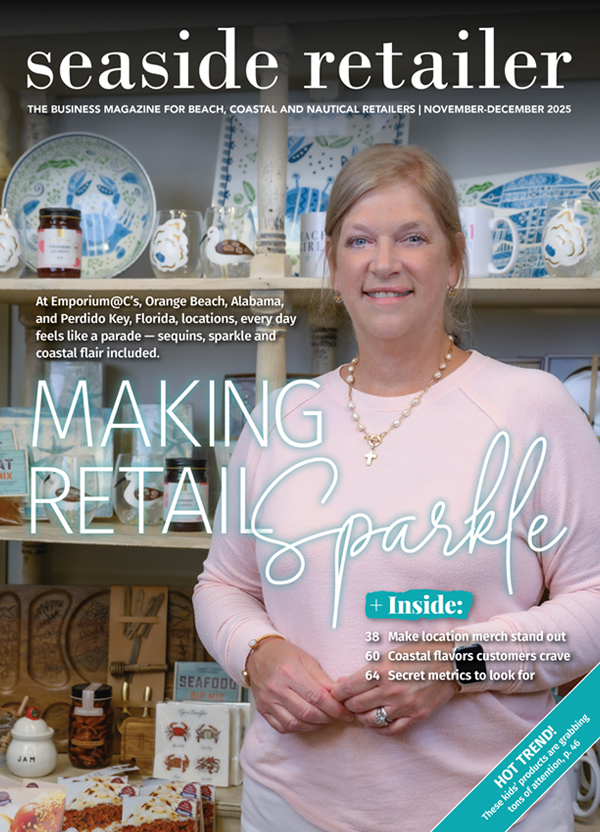
Growing your retail business requires money. Whether you’re planning to build up your inventory, branch out to a new seaside location or hire more people, getting a loan through the Small Business Administration can come in handy.
SBA loans, like any type of loan, require applicants to meet certain criteria to qualify. If you’re considering applying for one in 2022 understanding the various types of SBA loans and the application process to obtain one in important.
What are SBA Loans?
SBA loans are small business funds you (the borrower) can get from an SBA-accredited lender. The SBA doesn’t provide the funds itself, but rather serves as your guarantor. Typically, the SBA will guarantee 85% to 95% of the total loan amount you apply for, which in turn, minimizes the lender’s risk in giving you the loan. When it comes to the loan application, you will have to meet the criteria set forth by both the SBA (guarantor) and the lender you choose to work with.“Remember that the SBA was established to support small businesses like yours. So long as your paperwork is done and your credentials are verifiable, you have nothing to worry about.” – Matthew Gillman, SMB Compass
In addition to providing financial assistance to startups and small- to medium-sized businesses, the SBA also provides counseling and extensive business management education to new entrepreneurs.
Different Types of SBA Loans
The SBA offers various types of financing depending on the size of your business, the industry you operate in and your personal qualifications. Before you start shopping for a lender, it’s important to have a solid understanding of which SBA loans best meet your specific needs.a. SBA 7(a) Loan. The SBA 7(a) loan is the most popular financing program because it allows small business owners to receive up to $5 million in funding, which is then payable up to 25 years. This loan may be used for various purposes, such as the purchase of expensive equipment, debt refinancing or office renovations.
To qualify for a 7(a) loan, you must have less than $7 million in tangible net worth and less than $2.5 million in net income. You’ll also need to show a good personal credit score, a strong business cash flow statement, the nature of your business and location where the business operates.
b. SBA Express Loan. Like the 7(a) loan, an SBA express loan can be used for various purposes. However, with this loan, you’ll be informed of your loan application status within 36 hours (hence the express loan.) If approved, borrowers may receive up to $5 million in their accounts within 90 days.
The express loans certainly offer expedited funding, which is ideal if you need capital immediately, but they are also typically harder to qualify for. You’ll need to have a minimum credit score of 600 if you’re applying for $30,000 to $150,000 worth of loans, and a minimum score of 650 for any amount over $150,000. Stricter lenders may even require a minimum credit score of 680, depending on your qualifications.
c. SBA 504 Loan. The SBA 504 or CDC/504 loan is for small- and mid-size businesses that are looking for long-term, fixed-rate financing. This is offered by Certified Development Companies (CDC), which are the SBA’s community-based partners that regulate non-profit organizations.
Compared to 7(a) loans, an SBA CDC/504 loan is used for bigger investments that need huge amounts of working capital such as opening a new establishment, purchasing machinery or the purchase of land.
The assets you purchase are funded by a loan from a bank or a local lender, along with a second loan from a CDC-certified company. The lender covers 50% of the total loan amount, while the CDC-recognized company covers 40% of the asset’s value. The remaining 10% will come from the borrower’s equity.
Note that SBA CDC/504 loans may not be used for purposes other than real estate, machinery, and other purchases related to business expansion. That means you cannot use this type of loan to consolidate debts or increase your nautical store’s inventory, but you can use it to purchase a new establishment or parking lot.
d. SBA Microloan. An SBA microloan is for micro to small business owners who need immediate funding for equipment repairs, purchase of furniture or computers or to pay-off outstanding bills. Qualified entrepreneurs may get up to $50,000.
Getting an SBA microloan won’t require a minimum number of years in business to qualify. You need to show proof that you’re capable of repaying your loan by submitting a comprehensive business plan, cash flow statement and an outstanding credit rating.
e. SBA Disaster Loan. SBA disaster loans are designed to assist businesses that have encountered a crisis, such as a cyber-attack, burglary, a natural disaster or health-related emergency like the COVID-19 pandemic. Unlike the other loan types, you can obtain your SBA disaster loan directly from the SBA.
When applying for an SBA disaster loan, you must show proof of damages to your business and/or property. Your business must also be in an SBA-declared disaster area.
Borrowers may get up to $2 million depending on the amount of property damage and your qualifications. Disaster loans are also payable in up to 30 years. Disaster loans may be applied for in addition to the borrower’s approved 7(a) or CDC/504 loan.
f. SBA CAPLines Program. When taking out a loan is not the best option, small business owners can apply for the SBA CAPLines Program to meet their working capital requirements. This works like a line of credit, which offers revolving funds to borrowers who need spare cash for emergencies.
Like an SBA disaster loan, you can take out a CAPLine on top of an approved 7(a) or CDC/504 loan. Qualified applicants may receive up to $5 million in revolving funds with a term of up to 10 years.
How to Apply for SBA Loans
Once you’ve done your research and determined which SBA loan is best for you and your business, here’s what the application process will generally look like.1. Determine why you need an SBA loan. The most important step in your SBA loan application is determining why you need additional funds in the first place. Most small business owners make the mistake of getting loans without knowing exactly where they’ll allocate them. The problem here is that it becomes much easier to misuse the funds and get drowned in debts.
Note that even though the SBA has made it easier for all businesses to enjoy liquid funds with longer terms and lower interest rates, SBA loans are still a form of debt. Failure to repay your loans will only hurt your credit rating.
2. Look for an accredited SBA lender. Not all lenders are recognized by the SBA to release loans. If you want to look for lenders in your community, you can check out the SBA’s site which provides the 100 most active SBA 7(a) lenders in the United States as of 2021.
Finding a good lender that you trust is an immensely important step. Unfortunately, there are plenty of illegitimate ones out there who will try to squeeze more money out of you through unnecessary fees. Taking the time to find an accredited SBA lender who specializes in your business type and industry will only benefit you and your application.
3. Prepare your requirements. You should do your research to have a good understanding of which loan type(s) will best meet your needs before you begin shopping for a lender. That said, once you’ve found one, he or she will help you make your ultimate selection. This includes evaluating your creditworthiness to see if you’re qualified for the loan.
Here’s a checklist of the standard documents you need to prepare. Additional paperwork may be required.
- Business plan
- SBA loan type and desired loan amount
- Purpose for the SBA loan application
- Credit history
- Detailed cash flow and financial projections
- Collateral
- Income tax returns
4. Submit your SBA loan application. Lenders will carefully assess the documents you’ve submitted and send them to the SBA to evaluate whether or not you’re worth the risk. You can expect a turnaround time of up to 90 days before you know if you’re approved.
Some small business owners may find it intimidating to apply for an SBA loan simply because of the amount of work you need to do and the time it takes to apply. But this shouldn’t stop you from trying.
Remember that the SBA was established to support small businesses like yours. So long as your paperwork is done and your credentials are verifiable, you have nothing to worry about.
Matthew Gillman is a business financing expert with more than a decade of experience in commercial lending. Gillman is the founder and CEO of SMB Compass, a specialty finance company providing education and financing options for business owners. Learn more at www.smbcompass.com.



